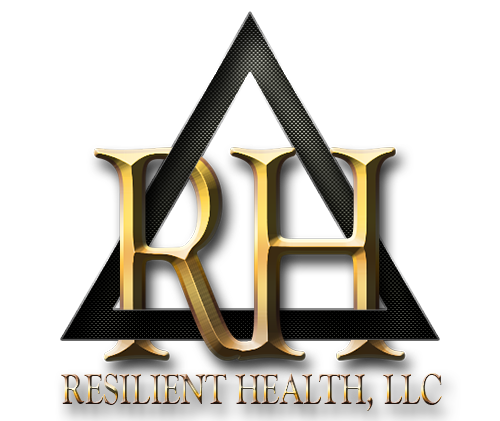10 Signs You Need to Stretch More (Backed by Science)
How your body tells you it's time to loosen up—before it breaks down.
Intro: Stretching Isn’t Just for Yoga Class
Whether you're a powerlifter, runner, or work-from-home warrior, your body needs mobility. The problem? Most of us don’t stretch—until pain forces us to.
Tight muscles don’t just feel stiff—they affect posture, performance, and injury risk. Let’s break down 10 clear signs it’s time to stretch more, with science to back it up.
1. You Can’t Touch Your Toes
🔬 Why it matters:
Hamstring and low back flexibility are key for proper movement mechanics, especially during hinging motions like deadlifts and squats. Limited flexibility increases spinal load and compensation.
📚 Research: A study published in the Journal of Physical Therapy Science found that poor hamstring flexibility was directly linked to increased lumbar spine stress in standing flexion tasks (1).
2. You Get Stiff After Sitting for a While
🔬 Why it matters:
Sitting shortens your hip flexors, inhibits glutes, and weakens core control. Over time, this leads to anterior pelvic tilt and low back pain.
📚 Research: A 2015 study in Clinical Biomechanics showed prolonged sitting significantly reduces hip extension range of motion (2).
3. Your Posture Worsens Throughout the Day
🔬 Why it matters:
Tight chest muscles and weak upper back muscles contribute to “desk posture”: rounded shoulders, forward head, and neck pain.
📚 Research: According to Manual Therapy Journal, thoracic spine mobility and pectoral tightness are directly correlated with forward head posture (3).
4. You Feel “Tight” Even After Warming Up
🔬 Why it matters:
Muscle tension isn’t always about cold muscles—it’s about fascial restriction. Without mobility work, dynamic warm-ups can only go so far.
📚 Research: Fascia responds to mechanical load (like stretching) over time. A 2018 review in Fascial Research Congress highlighted stretching as essential for restoring fascial elasticity (4).
5. Your Workouts Feel Limited by Range of Motion
🔬 Why it matters:
Lack of mobility can prevent proper joint mechanics, limiting performance and increasing injury risk—especially in strength training.
📚 Research: The Journal of Strength and Conditioning Research found mobility restrictions significantly impaired squat depth and bar path efficiency in lifters (5).
6. You Get Recurring Low Back or Neck Tension
🔬 Why it matters:
Tight hips and hamstrings pull on the pelvis, altering spinal alignment. The neck compensates when thoracic mobility is poor.
📚 Research: A study from Spine Journal reported that restricted hip mobility correlates with increased incidence of chronic low back pain (6).
7. Your Joints Click or Pop (Without Pain)
🔬 Why it matters:
Clicking often signals muscular imbalance or instability—not always bad, but often preventable through mobility and strength balance.
📚 Research: British Journal of Sports Medicine explains joint noises may reflect ligament or tendon tension from limited range and imbalance (7).
8. You Move Like the Tin Man in the Morning
🔬 Why it matters:
Morning stiffness is common—but when it’s persistent, it may reflect systemic tightness and fascial restriction.
📚 Research: Fascia retains fluid and stiffness overnight. Stretching restores glide and hydration to connective tissue (8).
9. You’re Chronically Stressed
🔬 Why it matters:
Tight muscles are a physical symptom of psychological stress. Stretching activates the parasympathetic (rest and digest) nervous system.
📚 Research: A 2014 study in Journal of Health Psychology confirmed that regular stretching reduced cortisol and improved emotional well-being (9).
10. You Haven’t Stretched in Weeks (or Ever)
🔬 Why it matters:
If this sounds like you… that’s your sign. Flexibility and mobility aren’t “natural”—they’re maintained through intentional effort.
📚 Research: Flexibility declines with age unless actively maintained, according to a 2002 study in Medicine & Science in Sports & Exercise (10).
How to Start Stretching (Without Being Overwhelmed)
Start small: 5–10 minutes a day is enough.
Focus on hips, hamstrings, chest, and thoracic spine.
Combine static stretches post-workout with dynamic stretches pre-workout.
If your body’s giving you signs—it’s time to listen.
Stretching isn’t optional. It’s necessary.
🔗 Ready to Stretch Smarter, Not Just More?
Book a mobility-focused session with us to:
Assess your movement restrictions
Identify which stretches your body actually needs
Get a plan that fits your routine and training goals
Sources:
J Phys Ther Sci. 2015 May; 27(5): 1581–1583.
Clin Biomech (Bristol, Avon). 2015 Nov;30(9):953-7.
Manual Therapy. 2013 Dec;18(6):533-9.
Fascial Research Congress Proceedings. 2018.
J Strength Cond Res. 2010 May;24(5):1333-9.
Spine J. 2007 Jul-Aug;7(4):379-87.
Br J Sports Med. 2002 Aug;36(4):251-4.
J Bodyw Mov Ther. 2009 Apr;13(2):104-10.
J Health Psychol. 2014 Jan;19(1):121-32.
Med Sci Sports Exerc. 2002;34(3):453-60.
